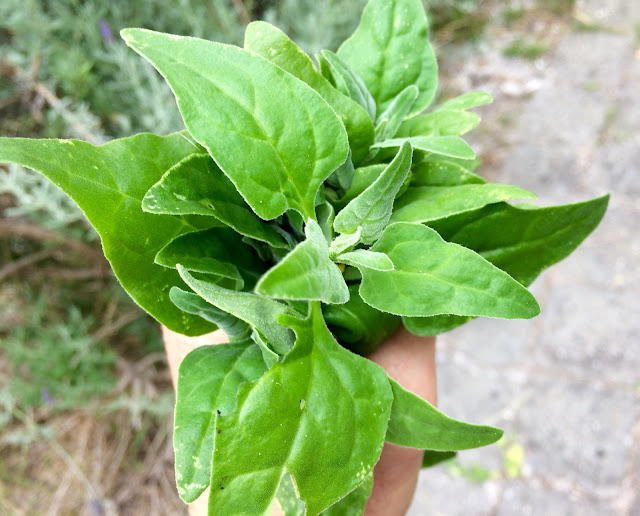Title : Wild Harvesting for Dinner: Simple Free Food
link : Wild Harvesting for Dinner: Simple Free Food
Wild Harvesting for Dinner: Simple Free Food
Our meal tonight included a lovely bunch of wild harvested greens from the lakeside.
After the floods a few years back, Warrigal Greens (Tetragonia tetragonioides) started appearing in the low-lying parts of my parent’s garden on the shores of the Gippsland Lakes. The seeds, or fragments of plants had washed up and found a new home. They have become quite lush and abundant - a great source of tasty, free greens.
Captain Cook used Warrigal Greens, high in vitamin C, to help fight scurvy on the Endeavour. It was growing abundantly around the shores in Sydney and still does. Cook picked, cooked and pickled it. Joseph Banks took seeds back to Kew Gardens and it became popular in England as a vegetable for some time.
 |
Warrigal Greens are also known as Botany Bay Spinach, Cook’s Cabbage , New Zealand Spinach, Sea Spinach. It is native to Australia, New Zealand, Argentina, Chile and Japan. |
Warrigal Greens were esteemed as a tasty dish by the Europeans, but from what I am reading it was a actually not eaten by indigenous Australians - possibly because the effort of having to cook it outweighed the benefits.
Growing it
Warrigal Greens are found growing wildly in many places. You’ll typically find Warrigal Greens growing around the edge of water ways because they like moist shady spots, and they actually don’t mind saline ground.You can also grow them in your garden for a hardy spinach alternative. They are quick and easy to grow, providing an abundance of food simply.
Grow them from seed, or take a cutting from a wild plant.
Remember they love to ramble so make a feature of this - grow them under fruit trees in your food forest, grow them under a vine, put them in a hanging pot (well-watered)
They are hardy but for lush and tender leaves, they need good access to water and fertile soil. They’ll grow in poor soils with little water, but their leaves will not be lush and delicious.
It actually thrives in hot weather - a good summer plant - but does like a moist shady position. It is very hardy and insect, snail and slug resistant.
Harvesting it
Use the young growing shoots. The older leaves become bitter. By harvesting the tips, it keeps this rambling plant in good shape.Eating it
Warrigal Greens can be used just like spinach, although it is best cooked even when young due to the oxalic acid content. It is suggested that you blanch the leaves first before cooking and throw away the blanching water. I add it to soups, stews, omelettes, veggie pies and much more.Tonight I made a delicious vegetarian stir fry to accompany what my kids call ‘eggy-bake’. I blanched some Warrigal Greens to add to both dishes.
Eggy-bake is a favourite of my young children and I’ve found is a great way to squeeze more vegetables of all sorts into their diet. I throw eggs, vegetables, herbs into a blender and pulse for a few seconds, then cook in a baking dish until ready (15-20 mins - I keep it thin to cook quickly). Sometimes we top with a handful of grated cheese.
The stir fry included garlic, onion, ginger, chilli, pumpkin, carrot, silverbeet, shallots and Warrigal Greens.
Warning:
- It contains oxalic acid so it is best to blanch the leaves for a minute or two in hot water before adding into a meal (throw away the blanching water).
- It can be found as an invasive plant in North and South America
Thus Article Wild Harvesting for Dinner: Simple Free Food
That's an article Wild Harvesting for Dinner: Simple Free Food This time, hopefully can give benefits to all of you. well, see you in posting other articles.
You are now reading the article Wild Harvesting for Dinner: Simple Free Food with the link address https://traditionalherbl.blogspot.com/2017/01/wild-harvesting-for-dinner-simple-free.html



0 Response to "Wild Harvesting for Dinner: Simple Free Food"
Post a Comment